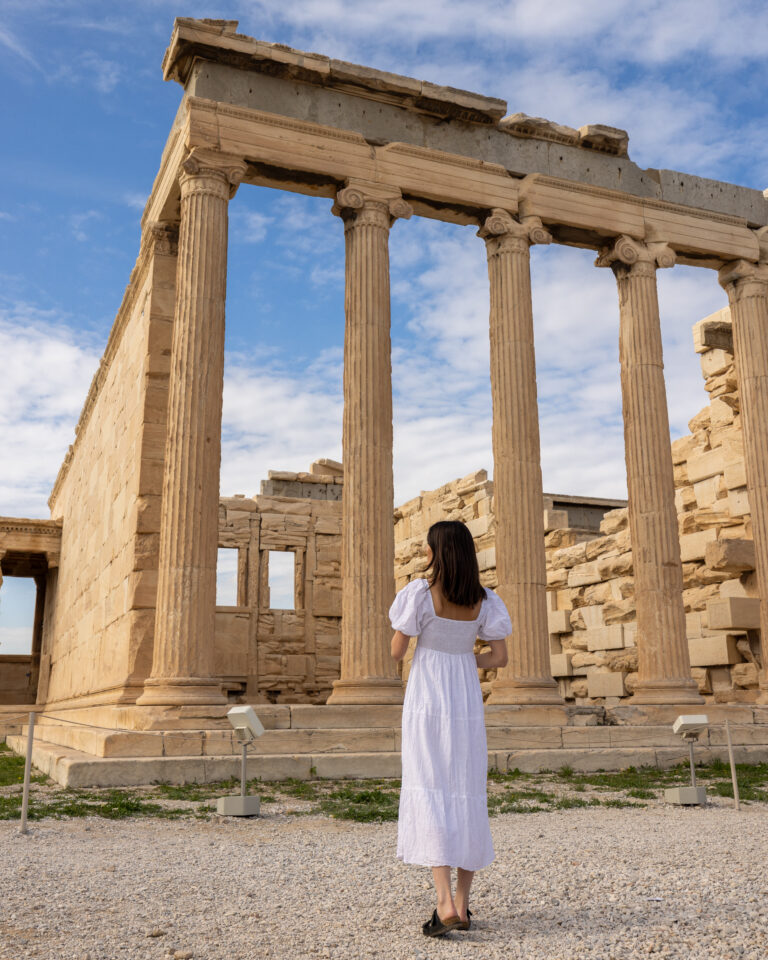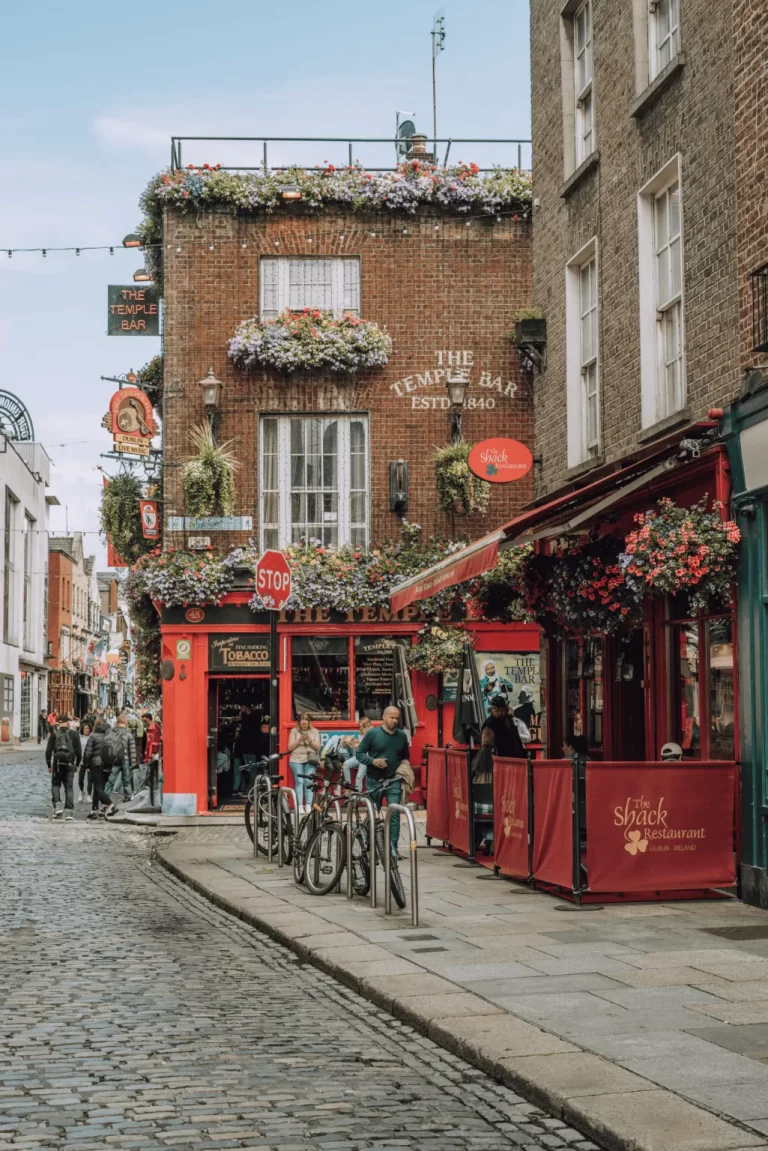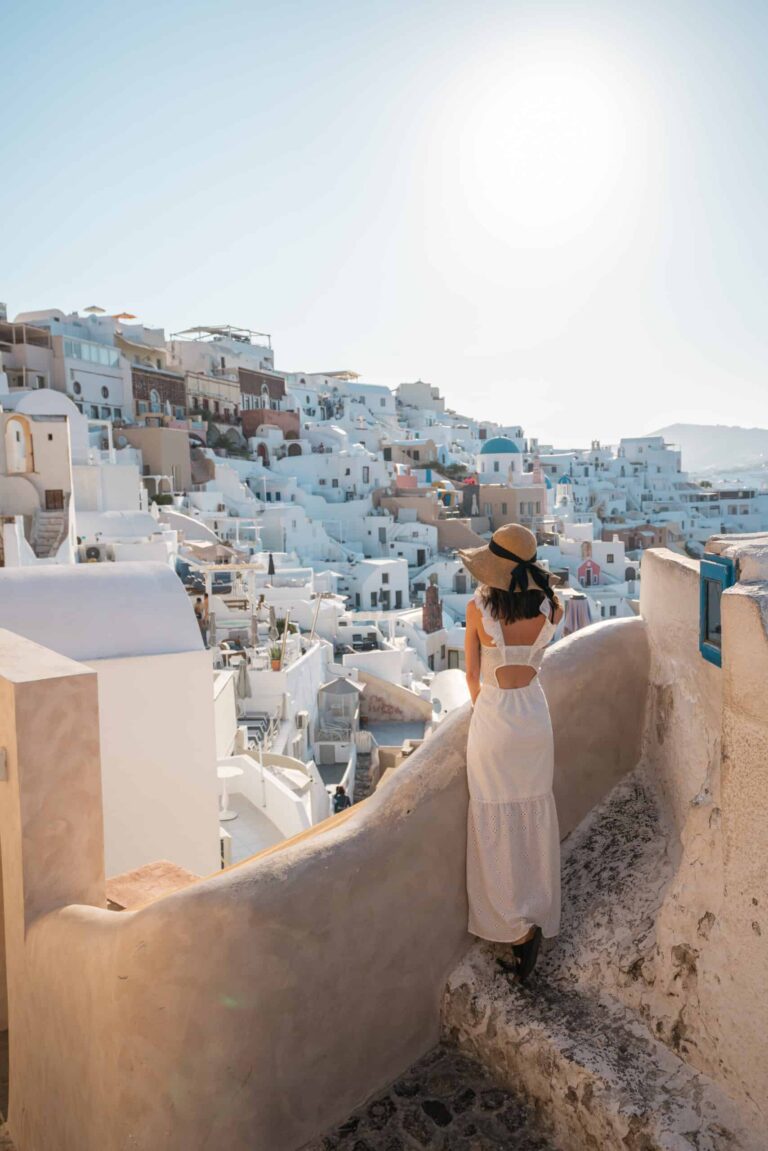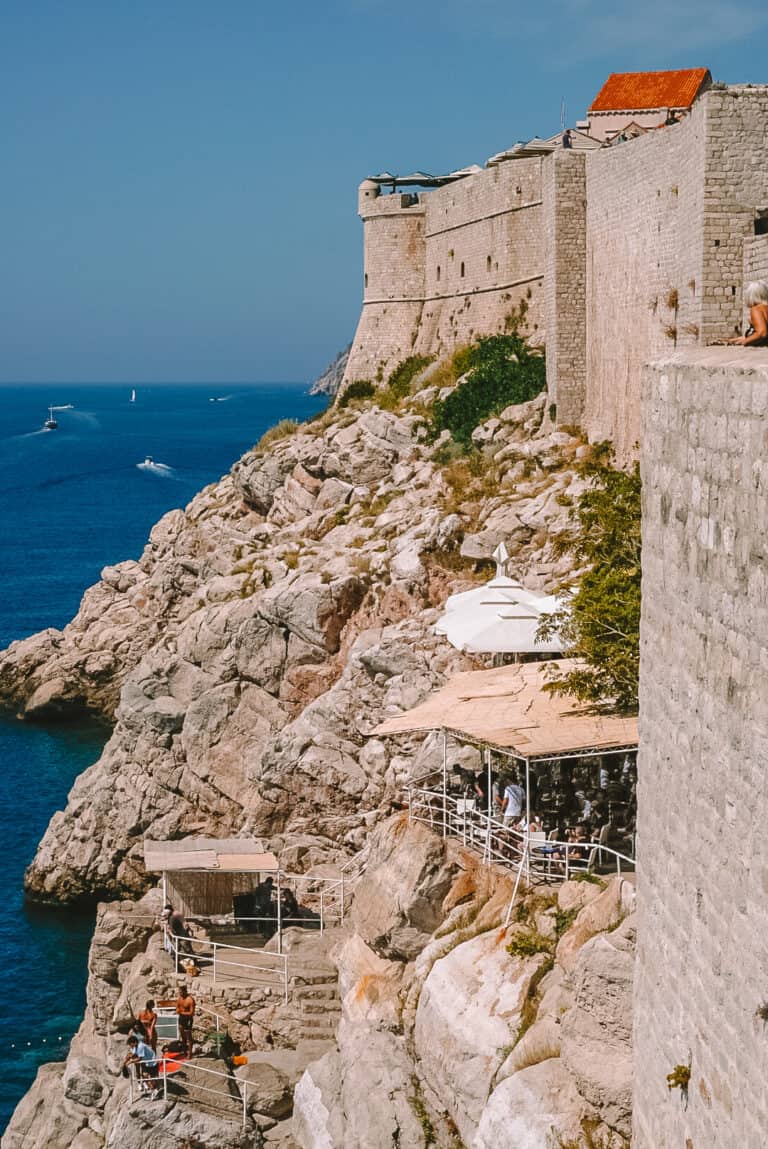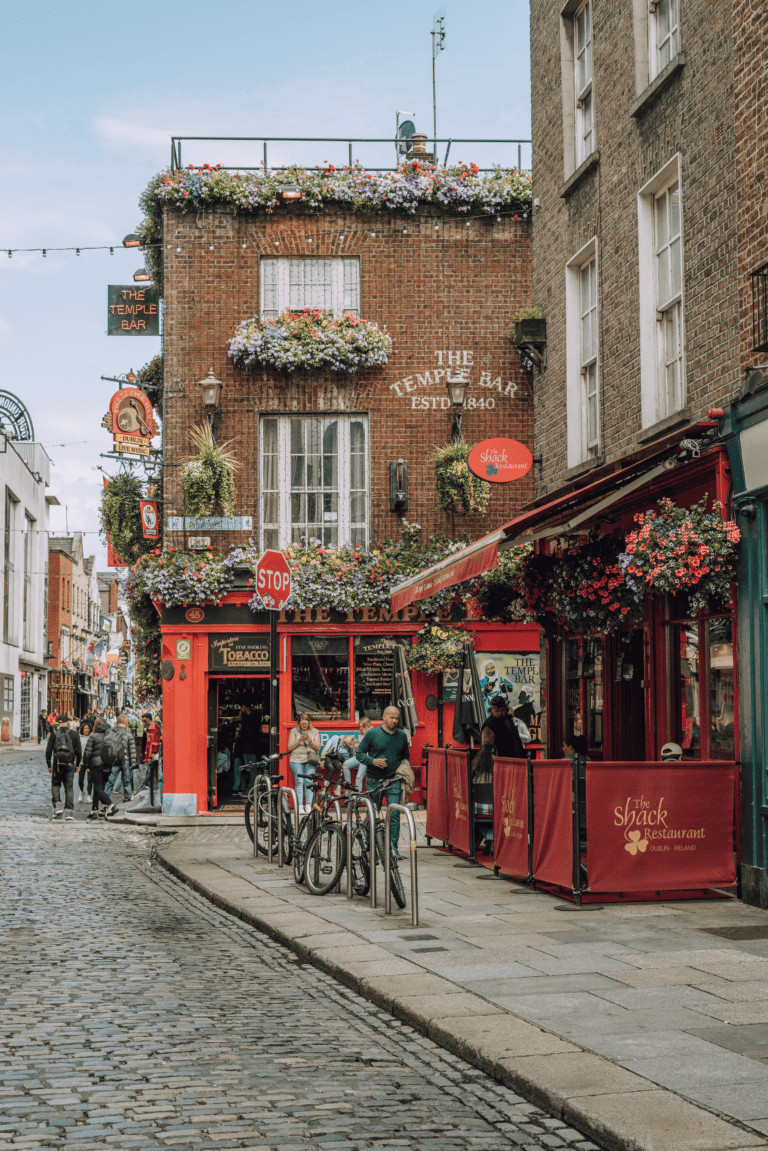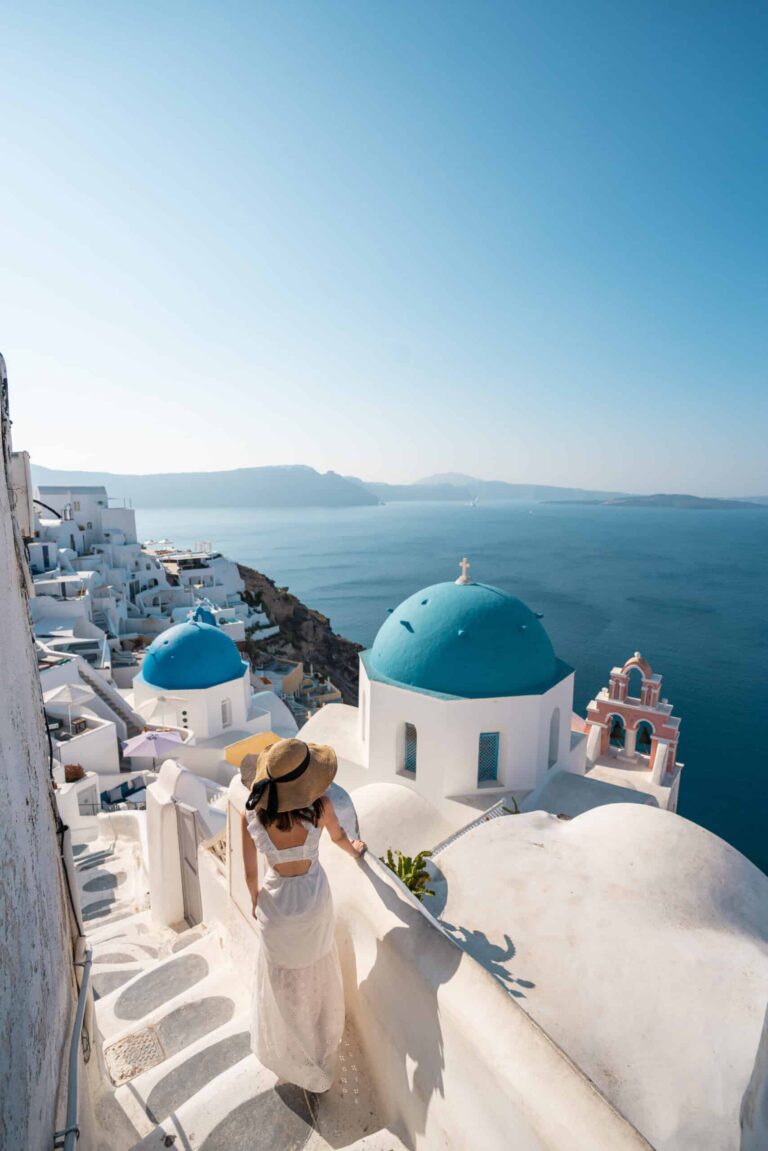Visiting Rome should be on everyone’s bucket list. A weekend in this city feels like stepping back in time, and it’s incredible to be able to experience somewhere with so much history. After our first trip getting cancelled (thanks, covid), we finally made it there in February last year, and I fell in love with the city’s charm. But planning the perfect Rome weekend itinerary can feel overwhelming.
There’s so much to see you could easily spend a full week exploring. But a weekend visit is the perfect introduction, and to help you make the most of your trip, I’ve put together the ultimate travel guide. I did a LOT of research before we visited, so rest assured, my Rome weekend itinerary will leave no stone unturned. Read on for a day by day guide of what to see and where to eat, drink and sleep in the Eternal city.

The Ultimate Rome Weekend Itinerary – FAQs
Why’s it called the eternal city?
You’ll often hear Rome referred to as the “eternal city”. I did it in the introduction, and if you didn’t know that was its nickname, you were probably wondering what I was on about. It comes from the ancient Roman belief that no matter what happened in the world, Rome would go on forever.
Is a weekend long enough in Rome?
A weekend in Rome is long enough to see the main sights, eat lots of great pasta, and get a feel for the city. 3 days is the perfect amount of time to spend in the city for your first visit.
Is Rome a walkable city?
Rome’s a very walkable city. Most of the main sights are close to each other in a relatively small area. I actually found the public transport in Rome to be quite poor, so I wouldn’t rely on it to get around.
When’s the best time to visit Rome?
I’m a big fan of city breaks outside of peak season. There’s less people, hotels are cheaper, and who wants to be walking around in 40 degree heat? We visited Rome in February and it was perfect.
Rome Weekend Itinerary: Where we stayed
One of my favourite parts of planning a trip, is choosing where to stay. Luckily, Rome has good hotels in abundance, so you don’t have to look far to find the perfect place. We split our time in Rome between 2 hotels, Soho House and The Hoxton, and I loved them both for different reasons:
1. The Hoxton



Photos courtesy of The Hoxton
If there’s a Hoxton in a city I’m visiting, I’ll book it. The design-led hotels consistently deliver, with good food, beautiful rooms, and cool locations in abundance. And their Rome outpost is no different. With 192 bedrooms, ranging from “Shoebox” to “Biggy” there’s something for all budgets, whether you’re just checking in for the night or staying the week.
Hox bikes are available to use for free during your stay, which makes up for it’s slightly out of town location.
Undeniably the best thing about The Hoxton and the reason I always recommend their hotels is ‘flexy time’. It’s an initiative they brought in back in 2019 to allow guests to choose their check-in and check-out times within a 24 hour period.
Let’s say you booked to stay on a Saturday night – if you really wanted to, you could check in at 12:01am Saturday morning and check out at 11:59pm Sunday night (I know, because I asked).
So if you’re arriving in the morning, when other hotels wouldn’t let you check in yet, you’re free to dump your bags, freshen up, and get exploring! Make sure you book directly to take advantage of this.
2. Soho House Rome



Photos courtesy of The Hoxton
The members-only hotel launched its Rome location in 2021, in a pastel-pink new build that certainly makes a statement. There’s 49 bedrooms, a rooftop pool, cinema, gym and 2 restaurants, and the exquisite Soho House design thats present in all of their hotels.
The biggest reason I love visiting their hotels is that the service is unrivalled, and our stay in Rome only solidified why I love it. From the moment we walked in staff couldn’t do enough for us, we’d landed much earlier than check-in, but our room was ready and they took our bags up straight away. And they were only too happy to help with restaurant recommendations – giving us a hand-scrawled list of their favourite spots in the city.
Located in lesser-known San Lorenzo, it’s a charming part of town, and feels very local, but location is what lets this hotel down in my opinion. You can’t walk to any of the main sights, and the transport system in Rome leaves a lot to be desired, so we found ourselves grabbing taxi’s most of the time. But, everything else more than made up for that small sacrifice.
Read my full review from my stay here
Rome Weekend Itinerary: Hotel recommendations
If those 2 hotels aren’t quite right for you, here’s some others I’d suggest:
Generator Rome



Photos courtesy of Generator
My sharing a dorm in a hostel days are long behind me, but I could be swayed by the private rooms at Generator. This design-led hostel is just a short walk from the train station, and around 20-minutes from The Colosseum. There’s a cafe, bar and even a rooftop, so whether you’re solo travelling or in a group, it’s a great place to meet people.
G-Rough



Photos courtesy of G-Rough
Locations don’t get much better than G-Rough, just 50m from buzzy Piazza Navona. Featuring pieces from Italian designers throughout, the 10-room boutique hotel is the coolest spot in the city. The price you pay for such a brilliant location is slightly less amenities – there’s a bar but no restaurant. But they offer something completely unique – insider tours of the city. Everything from vespa tours to experiencing a day in the life of a Gladiator.
Rhinoceros Rome



Photos courtesy of Rhinoceros Rome
Rhinoceros Rome is made up of 24 immaculately designed apartments in the ancient heart of the city. Original features are combined with modern touches to create one of the most beautiful spaces I’ve ever seen. It’s the perfect choice if you like your home comforts, every apartment has a mini kitchen, and plenty more room than the average hotel.
Rome weekend itinerary: Day #1
Welcome to Rome immersive video
Welcome to Rome is the perfect way to start off your weekend in the city. The interactive experience takes you through a series of exhibitions to learn about the history of Rome. It shows you how the city used to look, and the stories behind important buildings and monuments.
We did this on our first morning and it really helped us understand what we were looking at when we went exploring. I learnt so much I didn’t know before about the history of the city. The whole exhibition takes about 45-minutes, so it won’t take up too much of your day.
Visit the Pantheon
From the exhibition, you’re only a 10-minute walk to The Pantheon, so I’d recommend visiting there next. Built in 125 AD, it’s thought to have served as a temple, and is one of the best preserved buildings in Rome.
Reservations are required on weekends and bank holidays, but I’d recommend buying a ticket beforehand whenever you go. When we visited the queue was huge, and you don’t want to waste valuable exploring time stuck in a queue.
Ticket options:
- Audio guide – means you can explore The Pantheon in your own time
- Guided tour – learn more about The Pantheon with a knowledgeable guide
Stop for a drink at Piazza Navona


A short 4-minute walk from The Pantheon is Piazza Navona, one of the most famous squares in the centre of Rome. It was commissioned by emperor Domitian as a stadium for competitions, with stands for over 20,000 people. ‘Water games’ even took place here, where the whole square was submerged in water.
After the fall of the Roman empire, houses were built on the square, but the long centre space was left as it was and eventually became Piazza Navona.
Whatever you do, don’t eat in the restaurants here. You’ll pay a lot of money for average food. And whilst you’ll definitely pay over the odds for a drink too, it’s such a nice spot to people watch and soak up the atmosphere, so it’s worth it for one.
Grab lunch from Bread-in
By this point you’re probably starving, and luckily Rome has some of the best food in the world. From Piazza Navona, you’re less than 1 minute from Bread-in, an unassuming, but delicious sandwich shop perfect for lunch on the go.
Before moving on, you might want to pay a visit to Hotel Raphael (it’s only a 1-minute walk). Fans of the film Eat, Pray, Love will recognise this iconic building from Julia Roberts Italian adventure. I’d especially recommend the detour if you’re in Rome during the summer months, when the front of the building will be covered in plants.
Explore Trastevere
From Piazza Navona, take a leisurely stroll towards Trastevere. You can cross either Ponte Fabricio or Ponte Garibaldi to get there. Ponte Garibaldi is the more obvious choice, it was built specifically to ease the flow of traffic to Trastevere, but Ponte Fabricio is the oldest Roman bridge in the city, so I’d recommend visiting both.
Trastevere was my favourite part of Rome, full of charming, narrow streets, brilliant bars and restaurants, and a laid-back, bohemian vibe. Head there with no set agenda, just explore and see where you end up.
Dinner at Da Enzo el 29
You’ve probably seen Da Enzo all over social media – the popular trattoria serves up fresh pasta in the heart of Trastevere. There’s always a queue and they don’t accept reservations, but it’s worth the wait.
Other restaurants in Trastevere:
Rome weekend itinerary: Day #2
Set your alarm early for your second day in Rome. We’re heading to The Trevi Fountain, and you’ll want to miss the crowds.
Plazza del Quirinale
The ancient city of Rome was built on 7 hills, and Plazza del Quirinale sits on the tallest one. So unsurprisingly, it offers incredible views over the city. We stumbled upon it by accident, and whilst you don’t need to spend long here, it’s a beautiful place to take in the sights.
Trevi fountain


From Plazza del Quirinale, it’s just a 5-minute walk down the steps to the Trevi Fountain. It’s pretty much impossible to avoid crowds here, but the earlier you go, the quieter it’ll be.
You don’t need to spend too long here, just enough time to throw in a coin and make a wish. Legend has it that throwing one coin in means you’ll return to Rome, throwing two means you’ll find love whilst you’re there, and if you throw three, you’ll marry them.
*the fountain is usually cleaned on Monday, Wednesday and Friday between 8-9am. During these times there’s temporary gates put up so you won’t be able to get close to the fountain. Try and avoid them if you can.
Visit the Spanish steps

The Spanish Steps are an 8-minute walk from the Trevi fountain, so head there next. The grand staircase provides amazing views over the city.
The 135 steps were built in 1723 to link the Trinità dei Monti church at the top of the steps, with the Spanish square below. They act as a meeting point in the city, a tradition that dates back to when they were first built, and the elegant design made them a popular place for artists, and creatives to gather.
Head to the Vatican City
From the Spanish Steps, it’s a 30-minute walk to the Vatican city. Cross over Ponte Sant’Angelo – probably Rome’s most photographed bridge, and you’ll arrive at Castel Sant’Angelo. The approach is stunning, and whilst we didn’t go inside the building (you can if you’d like to), the outside is one of the most beautiful sights in Rome.
Originally built as tomb of the Roman Emperor Hadrian, it’s since served as a fortress, home of the Pope, a prison, and today, a museum. As well as being able to see a mausoleum that’s almost 2000 years old, the roof of Castel Sant’Angelo offers incredible views over Rome.
Once you’ve crossed Ponte Sant’Angelo, you’re officially in another country. The Vatican City is actually the smallest country in the world, after being established as a independent city-state in 1929.
Visit the Vatican Museums


From Castel Sant’Angelo, it’s a 10-minute walk to The Vatican Museums and The Sistine Chapel.
I’d strongly advise getting skip the line tickets for The Vatican Museums. You have to go and collect them a short walk away from the entrance, and you’re then escorted in by a guide inside the museum, who collects your tickets for you from the desk, and then you’re free to explore on your own. If you don’t do this, you could end up waiting a really long time in the queue outside.
Now, in the spirit of transparency, The Vatican Museums are incredible, but I did find them quite boring towards the end. It’s a fascinating piece of history, but there’s over 8 miles of corridors you have to walk through to get to The Sistine Chapel and it feels endless. I’d still recommend seeing it, you can’t visit Rome and not go, but it wasn’t my favourite thing we did.
St. Peter’s Basilica
After the Vatican Museums, pay a visit to St. Peter’s Basilica – a renaissance-style church that’s free to enter. In front of it is St.Peter’s square – one of the largest squares in the world.
Eat Cacio e Pepe for a late lunch
Cacio e Pepe, meaning “cheese and pepper”, is a pasta dish that originated from Rome. So you can’t visit without having it AT LEAST once. And one of the best places to eat it in the city is just round the corner from the Vatican Museums. This unassuming restaurant ended up being our favourite meal of the trip.
We’d finished our tour of the Vatican Museum and were ready for lunch, when we stumbled upon Borghiciana Pastificio Artigianale. It’s tiny and the line is always long, so be prepared to wait. I promise it’s worth it. The dishes are authentic and affordable, and the owner will always make you feel welcome.
Travel tip: Contact the owner and book a table in advance for this place.
Grab a drink overlooking the Trevi fountain
After lunch, head to the rooftop of Hotel Fontana for a drink overlooking the Trevi fountain. Given its location, its no surprise that the drinks aren’t cheap. But if you can grab the table with the best view, it’s worth it.
Take a stroll around Villa Borghese
You’ve had a hectic morning, so I’d recommend having a slow afternoon. Head towards Villa Borghese, with a slight detour to Come Il Latte, the best gelato we had in Rome. A gelato tip for you – if you can see it, avoid it. To get the gelato to stay upright without melting, and to give it those vibrant colours, requires preservatives, so it’s a sign that it’s not the good stuff.
Instead, you want the gelato to be in vats, with lids. And that’s exactly what you get at Come Il Latte. It’s fresh, and delicious. Ice cream secured, it’s just 5-minutes to Villa Borghese. The largest public park in Rome, its been open to the public since 1903 and is the perfect place to escape the business of the city for a few hours.
Dinner at Antico Arco
When in Rome, eat pasta for lunch and pasta for dinner. En route to Antico Arco, our taxi driver told us it was one of the best places in the city for food, and there’s no recommendation like one from a local. Choose from the tasting menu or a-la-carte offering at this Michelin guide restaurant, and prepare to be impressed.
Drinks at The Barber Shop
After dinner, head back to the city to The Barber Shop. This speakeasy style bar was one of our favourite things we did in Rome. Specialising in cocktails, they encourage you to be creative with your order. Tell them the flavours you like and they’ll make you something brilliant.
You do have to pay £5 for a “membership” but just look at it as an entry fee. We bought ours on the door.
Rome weekend itinerary: Day #3
Breakfast at Marigold
Start your day at Marigold, the coolest breakfast spot in the city. Using seasonal ingredients from independent businesses in Italy, the minimalist restaurant serves up classics such as omelettes, pastries and porridge. And obviously, good old avocado toast.
The Colosseum


It’s your final day in Rome, and we’re saving the best until last. The Colosseum is undoubtedly Rome’s most famous landmark, and it deserves that reputation. The amphitheatre sits in the centre of the city, and despite being nearly 2,000 years old, is the largest standing amphitheatre in the world today.
The Colosseum was built as an entertainment venue, with space for over 50,000 people to watch gladiatorial games. Over the years, earthquakes have destroyed parts of the structure, but that doesn’t make it any less impressive. In 2007, it was announced as one of the New 7 Wonder’s of the World – you simply can’t have a Rome weekend itinerary without it.
What do the different Colosseum tickets include?


The Colosseum tickets are a bit confusing, so I’m going to break down exactly what’s included in each one. As with everything on this list, I’d strongly advise booking your tickets ahead of time. The Colosseum is the most popular landmark in Rome, so it gets VERY busy.
STANDARD: This ticket gives you skip-the-line entry to The Colosseum and one entry to the Roman Forum/Palatine Hill.
ARENA ACCESS: Get everything you would with a standard ticket, as well as access to the arena where the Gladiators would fight. This is the ticket we got, and I’d strongly recommend seeing the arena. You really get a feel for what it would have been like for the Gladiators all those years ago.
UNDERGROUND ACCESS: The underground tunnels of The Colosseum are restricted unless you’re with a guide, but it’s one of the most fascinating parts of the building. You’ll be able to see the tunnels that connected The Colosseum with Ludus Magnus, where the Gladiators would train. And view the chambers where the wild animals were kept. This ticket also includes a guided tour of Palatine Hill and the Roman Forum, so you really do get a lot for your money.
CHOOSE YOUR TICKETS:
Roman forum


After The Colosseum, keep your afternoon free of plans, because you’ll want to stay at the Roman forum for hours. For me, nothing highlighted the city’s history like it. It runs between the Palatine and Capitoline hills (2 of the 7 hills we spoke about earlier), and was the centre of everyday life in Ancient Rome.
Beginning as a place for shopping and public meetings, it developed over time as the needs of the city changed – becoming a site of political and religious importance. Today, the ruins of the Forum exist alongside the modern city of Rome, and it’s truly incredible.
Things to look out for a the forum:
- Arch of Titus
- Basilica of Constantine
- The Curia
- Temple of Romulus
- Temple of Vesta & House of the Vestals
- Arch of Septimius Severus
- Temple of Saturn
- Temple of Castor and Pollux
- Temple of Antoninus Pius
- Via Sacra
I hope you found my ultimate Rome weekend itinerary helpful. It really is the most magical city, so whether you follow this plan or not you’ll have an amazing time.
Plan the ultimate Rome weekend itinerary
Everything you need to plan the perfect weekend in Rome
FLIGHTS: Find the cheapest flights to Rome using the Skyscanner website.
ACCOMMODATION: Find the most affordable (+ beautiful) hotels in Rome on Booking.com.
ACTIVITIES & TOURS: Book skip-the-line tickets to the best activities in Rome with Viator
